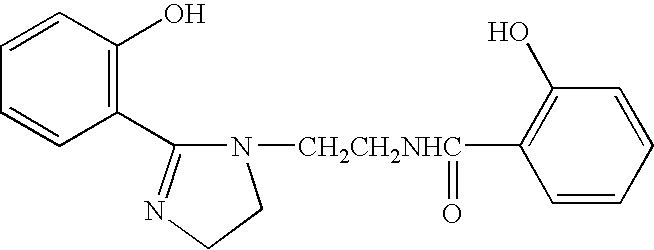Heat activated epoxy adhesive and use in a structural foam insert
a technology of epoxy adhesive and foam insert, which is applied in the direction of adhesive processes using foamed adhesives, inorganic adhesives, metal layered products, etc., can solve the problems of ineffective wet-out of vehicular substrates, concomitant weaker bonding, and propensity to crosslink before expansion, so as to improve chemical bonding and reduce cell structure , the effect of enhancing durability
- Summary
- Abstract
- Description
- Claims
- Application Information
AI Technical Summary
Benefits of technology
Problems solved by technology
Method used
Image
Examples
example
Preparation of a Structural Foam Insert with Controlled Adhesive Cell Size
[0026]A rigid polyurethane foam having a density of 0.64 g / cm3 and a Young's modulus of 400 MPa is conformed to a desired shape. An expandable adhesive is prepared by adding to a vessel with mixing DER 331 epoxy resin (40%), DER 337 epoxy resin (25%), CELOGEN AZ 120 blowing agent (1.5%), CaCO3 filler (0.45%), carbon black (0.9%), ACCELERINE CEL 2191 catalyst (1%, obtained from Celerity LLC), AMICURE CG1200 dicydiamide, DEGALAN 4944F PMMA (12.1%), MICROTHENE FE-532 polyethylene copolymer (10%), and CABOSIL TS-720 (4.1%) at 40° C. for 1 hour. Entrapped air is then removed by mixing under vacuum for 30 minutes. The blend is injected into a hot mold (120° C.) surrounding and conforming to the shape of a polyurethane foam insert so that the expandable adhesive substantially covers the insert to achieve variable designed thicknesses ranging from 2–3 mm for designed variances in final mechanical properties of the exp...
PUM
| Property | Measurement | Unit |
|---|---|---|
| Temperature | aaaaa | aaaaa |
| Temperature | aaaaa | aaaaa |
| Length | aaaaa | aaaaa |
Abstract
Description
Claims
Application Information
 Login to View More
Login to View More - R&D
- Intellectual Property
- Life Sciences
- Materials
- Tech Scout
- Unparalleled Data Quality
- Higher Quality Content
- 60% Fewer Hallucinations
Browse by: Latest US Patents, China's latest patents, Technical Efficacy Thesaurus, Application Domain, Technology Topic, Popular Technical Reports.
© 2025 PatSnap. All rights reserved.Legal|Privacy policy|Modern Slavery Act Transparency Statement|Sitemap|About US| Contact US: help@patsnap.com

